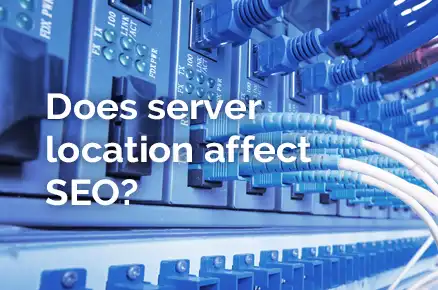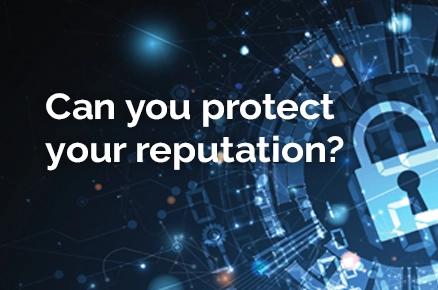How do I improve my cyber security?
What are the 10 steps to improved cyber security?
If you're wondering, "What are the 10 steps to cybersecurity?" then being vigilant against criminals is the first step for every type and size of company. For this reason, commissioning a secure website is now crucial for West Midlands and Shropshire businesses in taking those initial steps towards cyber security.
Data protection laws are tighter than ever, and data breaches can bring hefty fines, especially when you demonstrate any degree of negligence or oversight!
Not to mention the potential business interruption and loss of reputation you will face if valuable commercial data is lost, corrupted or stolen.
It doesn’t help matters that criminal activity online is increasingly sophisticated and insidious, targeting individuals and companies.
The big fear for many people has their sensitive financial information – and therefore money - stolen. However, online identity theft is an increasing problem. For example, there have been many cases where personal details have been sold.
You may only become aware of identity theft when your credit rating drops through the floor; you get invoices for things you didn’t buy or even face criminal investigations for something you didn’t do!
Ways you can get scammed out of money online are increasingly diverse too.
Fraud methods have moved from bogus emails and SMS messages to websites that look authentic.
Fraud and hacking are not the only problems, of course. Malicious software (Malware) can bring your business to its knees with one devastating virus.
That’s why it so important to know what are the 10 steps to cybersecurity.
1. Secure website development and hosting
Any organisation that handles financial transactions – especially eCommerce ventures – should carefully check its website design and SEO agency credentials.
Do they use the latest systems and techniques to build a secure site for your business and to host it correctly on the safest server?
2. DNS management
One of the first things Clickingmad does for security-conscious clients is to drill down on their Domain Name System to make sure it is robust.
We also apply for an SSL certificate (Secure Sockets Layer) and install it into the website. This indicates that your website is trustworthy. Note though that this doesn’t stop attackers, it only secures the connection between the user and the webserver. It is vital to ensure you have the right SSL certificate in place. This would appear on your website as a lock symbol in the address bar. Site users will probably look for this before doing any transaction or sharing financial information with your company. Indeed, Google may block your website from being shown if it is insecure.
3. Website updates and expert evaluation
A continuing relationship with a top agency can ensure that the software used within your website architecture is constantly updated, including the most recent security patches and fixes. This will keep you one step ahead of cyber criminals as they develop new ways to steal or disrupt data.
Clickingmad constantly checks for coding errors and other signs of security breaches within client websites too.
4. Centralised and controlled digital platforms
If you are very active online as a company, having a clear line of responsibility and centralised management systems can make you far more cyber secure.
This is especially true if you manage multiple sites. Having these set up and run by one agency can establish transparency and control.
At Clickingmad we have invested in securing ISO 27001 certification. This internationally recognised certificate indicates how seriously we take our data security, and therefore our clients data safety. The processes and procedures we adhere to make sense of even the most difficult data management systems. We suggest you take a look at the standard for your benefit.
5. Companywide cyber security
A chain is only as strong as its weakest link, and your cyber security could fail despite investing in all the latest software and expertise at Head Office! This is especially true as recently, many companies have taken an accelerated leap into more remote and flexible work patterns.
If you have staff using various devices in dispersed locations, you are vulnerable to various data breaches and security issues. Make sure your policies, procedures and staff training are constantly updated, so everyone plays their part in combating cybercrime, as well as avoiding accidental data loss!
6. Create a seamless digital workplace
This cyber security step links to the one above. As your organisation grows and develops, it’s common to fall into the habit of knitting together a patchwork of software, devices and operating practices. Creating a well-integrated digital workplace with uniform and well-mapped hardware and software can make commercial security far more assured.
You can also remove redundant data and stay compliant with data control laws more efficiently.
7. Timetable internal cyber security checks
Though invaluable, you can’t simply rely on your website development agency’s professional insights to keep your data safe.
You should have someone in your organisation who takes the lead on cybersecurity. However, you may need to train and task several managers to carry out regular checks. This can help them spot anomalies and unusual activity online or within your company intranet system. Having enough people able to identify and flag issues quickly can nip them in the bud!
8. Manage user privileges
A lot of the above steps to cybersecurity become redundant if untrained or unauthorised persons can gain access to your data assets and digital platforms. For example, you could have too many staff to go into your website’s admin functions or have sensitive data archived or stored incorrectly.
Review your digital network and data systems regularly to evaluate user privileges. Ensure there is a logical and safe system to control who sees what and who can load and alter data resources!
9. Constantly update Malware protection
This is one area of cybercrime that needs particular emphasis, as sadly, there is a constant flow of new viruses that can corrupt or destroy data and operating systems. The person responsible for your cyber security must keep themselves up to date on emerging threats and the things you can do to guard against new malware.
As far as websites are concerned, if you own a WordPress website you may be at particular risk as that software is seen as easy prey for hackers. Make sure all your plug-in’s and core software is up to date or removed if not needed.
10. Incident management after reading “What are the 10 steps to improved cyber security?”
What happens if your company experiences a data breach, or you discover you have been the victim of identity theft or some other fraud? You must have a strategy in place to deal with the issue before it becomes a crisis! This involves a pre-agreed plan that key personnel are aware of.






News and Insights
Sign up for updates